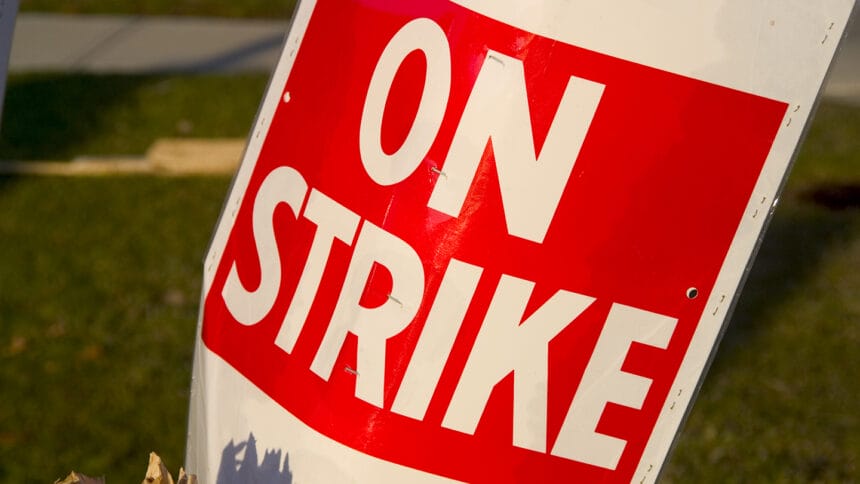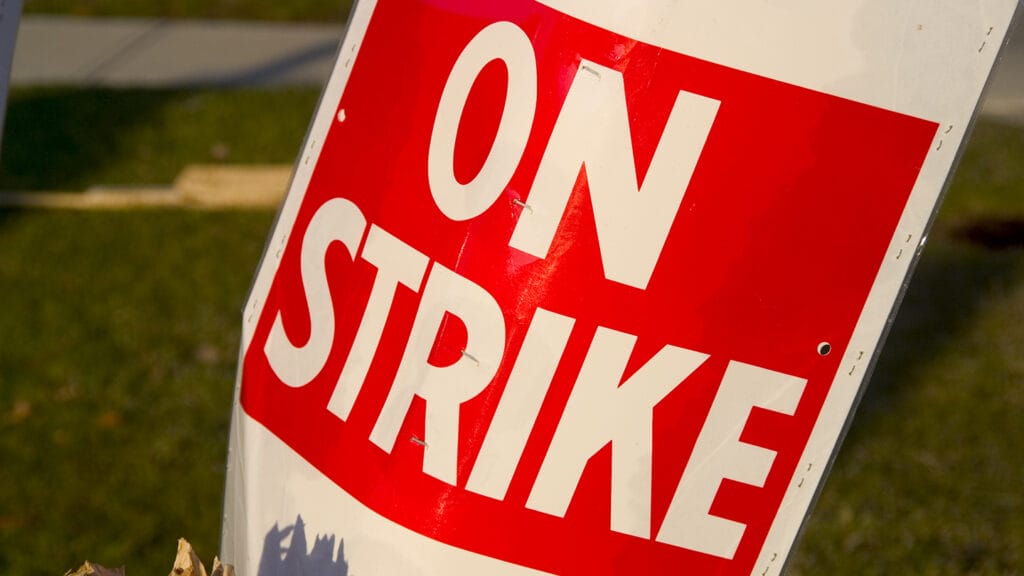

Around 1,000 direct care and support staff workers staged a coordinated, one-day strike at 12 unrelated Minnesota nursing homes Tuesday — demanding a $25 nursing home minimum wage, better benefits and more protections for unionization efforts.
A high demand for labor in the sector contributed to the size of the nursing home strike, which is the largest the state’s long-term care sector has faced in decades.
Long-term care providers in the state share some common goals with workers — such as raising worker wages and hiring more permanent staff instead of agency workers — but are faced with a complex financial and workforce landscape, according to Toby Pearson, president and CEO of the Care Providers of Minnesota.
“Providers would love to hire more permanent staff,” Pearson told McKnight’s Long-Term Care News Wednesday. “The problem is we have a number of providers who have had open positions that haven’t exactly had people coming in to apply for them. So it’s a little bit reductive to say the workforce is just a simple A equals B.”
Workers returned to the job Wednesday morning to avoid a too-long pause in care for residents, but are planning to return to the negotiating table with providers later this week, according to Jamie Gulley, president of the SEIU Healthcare Minnesota & Iowa — a union representing the striking workers.
“We’re hoping to make some progress over the coming days, but we’re still pretty far apart,” Gulley told McKnight’s Wednesday.
A key point of contention between providers and workers is the ability of providers to absorb the costs of a $25 minimum wage without an immediate state funding vehicle.
Union leaders have called on providers to prioritize worker wages over executive salaries and investments, as well as taking advantage of higher reimbursements that could be gained by hiring more permanent workers and increasing their wages.
No easy solution, providers say
Nursing homes in Minnesota — like those in many other states — have been reliant on expensive agency staff to meet daily care demands, but these temporary workers wages are often so expensive that they exceed state caps on reimbursement funding.
A recent survey from the American Health Care Associations shows that 80% of nursing homes report needing at least a month, and some more than six months, to fill an open position.
Reimbursement rates would be readjusted for facilities that increase wages to permanent workers, Pearson acknowledged, but not before an 18-20 month delay.
Such a delay would require up-front funding that many nursing homes would struggle to amass, especially after many nursing homes have been forced to reduce their number of beds in recent years. The reduction in beds means that, for many facilities, increased reimbursement rates would not necessarily equate to increased revenue overall, Pearson pointed out.
Long-term care providers have spent the last three years advocating with the state Legislature for $700 million of additional funding to raise nursing home workers’ wages $5 across the board, Pearson said — without gaining much traction.
The state has passed funding grants for nursing homes in recent years, but the sector needs more permanent relief rather than one-time funding injections, according to Pearson.
Labor’s two-pronged approach
Union leaders have acknowledged some challenges faced by nursing homes and noted that state funding aid could be helpful, but remain adamant that providers could make significant increases to worker compensation now.
“Providers will point to [the 18-20 month reimbursement lag] as a significant hurdle for them when it comes to cash flow and needing to go into reserves,” Gulley said. “I appreciate that that is true. And yet it is not true that they need state investment in order to raise pay. They’re getting the cart and the horse backward. If they raise pay they will get reimbursed…. They’re choosing not to. They’re investing money in other places — executive salaries, premium staffing rates for agency staff or corporate expansion.”
Gulley called the upswing in state labor activity a “groundswell,” but said that labor isn’t relying solely on strikes and demands on individual facilities to achieve their demands.
Labor advocates are also pressuring the state’s newly created Nursing Home Workforce Standards Board to implement their desired $25 minimum wage. That state board has the authority to mandate wage levels in nursing homes.
Public hearings with the board were taking place Wednesday and today. Pearson told McKnight’s that providers are anticipating some sort of ruling on wage levels to be released within the next month.
The question remains whether any new requirements will be accompanied by state funding. The relationship between providers and state funding should leave at least some responsibility on state policymakers, Pearson said.
“We do think that it is a state responsibility to share in the provision of quality services to our residents,” he said. “It is the state’s responsibility to step up and say ‘you know what, it’s important from a state perspective to take care of these folks and so we’re going to step up and increase rates to make sure this can happen.’”





